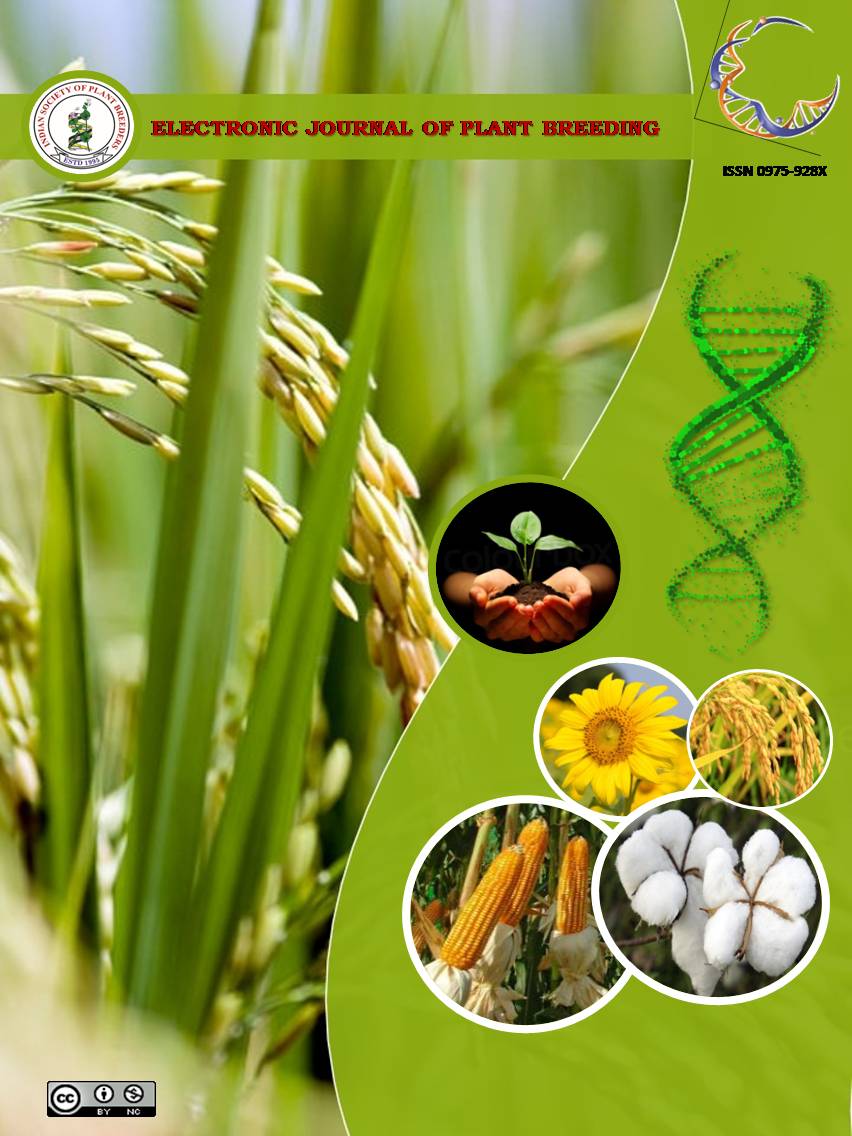Genetic variability and association studies for yield and floral traits in Temperature Sensitive Male Sterile lines (TGMS) of rice (Oryza sativa L)
Abstract
One hundred and nineteen rice TGMS lines were evaluated for ten morphological traits in fertility favouring environment and eight floral traits in sterility favouring environment respectively. The analysis of variance exhibited significant difference among the TGMS lines for all the traits studied except sterile lemma length indicates large amount of genetic variability was present in the experimental material. The morphological traits viz., pollen fertility, number of grains per panicle, single plant yield and floral traits namely anther length, anther breadth, stigma length, stigma breadth, glume opening angle, stigma exertion and pollen sterility were recorded high phenotypic and genotypic coefficient of variation. High heritability with high genetic advance as per cent of mean was observed in morphological traits namely, days to 50 per cent flowering, pollen fertility, spikelet fertility, number of grains per panicle, single plant yield and in floral traits viz., anther length, anther breadth, stigma length, stigma breadth, stigma exertion, glume opening angle and pollen sterility reveals presence of additive gene action and further genetic improvement through direct selection would be effective for these traits. The single plant yield observed significant and positive correlation with plant height, number of productive tillers per plant and spikelet fertility shows importance of these characters for yield improvement. In floral traits, stigma breadth and glume opening angle had non significant and positive correlation with pollen sterility. Path analysis showed that plant height and number of productive tillers had positive direct effect on single plant yield. In floral traits, stigma breadth and glume opening angle had small positive effects on pollen sterility.

It is certified that:
- The corresponding author is fully responsible for any disputes arising due to the publication of his/her manuscript.
- The article has been seen by all the authors who are satisfied with its form and content.
- The sequence of names of authors in the by-line is as per their relative contribution to this experiment, giving due credit to all scientists who made notable contribution to it.
- All the authors fully understand that inclusion of any other co-authors or exclusion of any co-authors is not possible once the article has been submitted to the journal.
- The corresponding author takes full responsibility for this article.
- The address of the organization where the research was conducted is given.
- The article is exclusive for this journal, and the results reported here have not been sent (and will not be sent during its consideration by this journal) for publication in any other journal.
- Authors agree to abide by the objective comments of referees and do agree to modify the article into a short note as per the recommendation, for publication in the Electronic Journal of Plant Breeding.
- If published in Electronic Journal of Plant Breeding, the copyright of this article would vest with the Indian Society of Plant Breeders, who will have the right to enter into any agreement with any organization in India or abroad engaged in reprography, photocopying, storage and dissemination of information contained in it, and neither we nor our legal heirs will have any claims on royalty.


